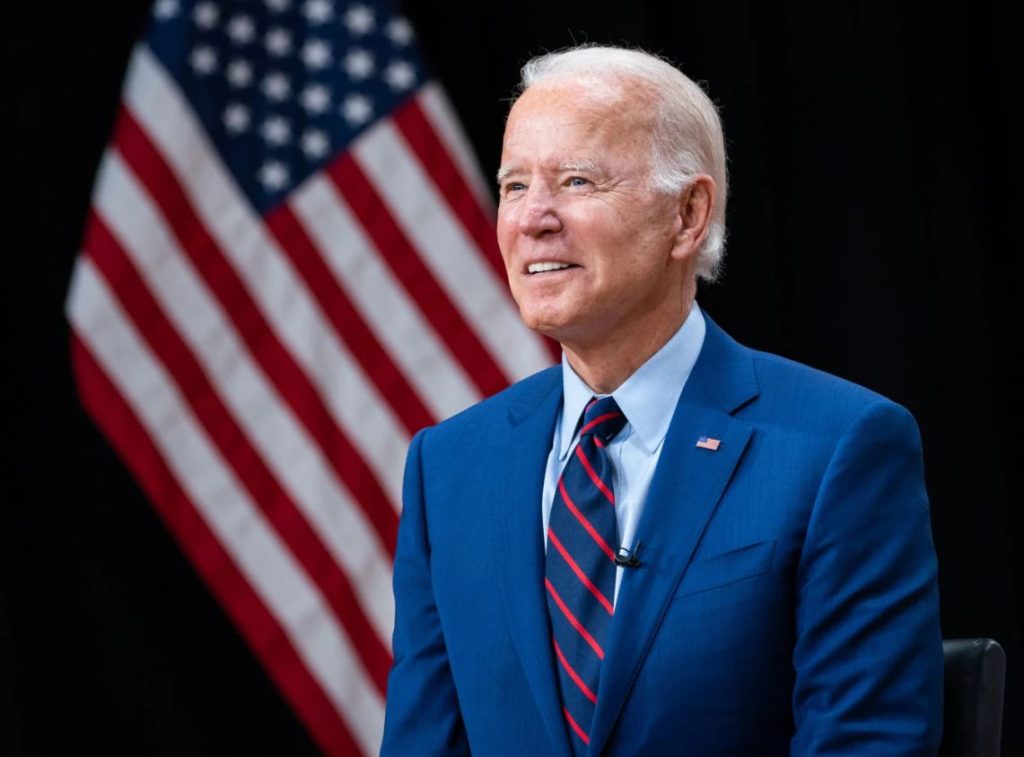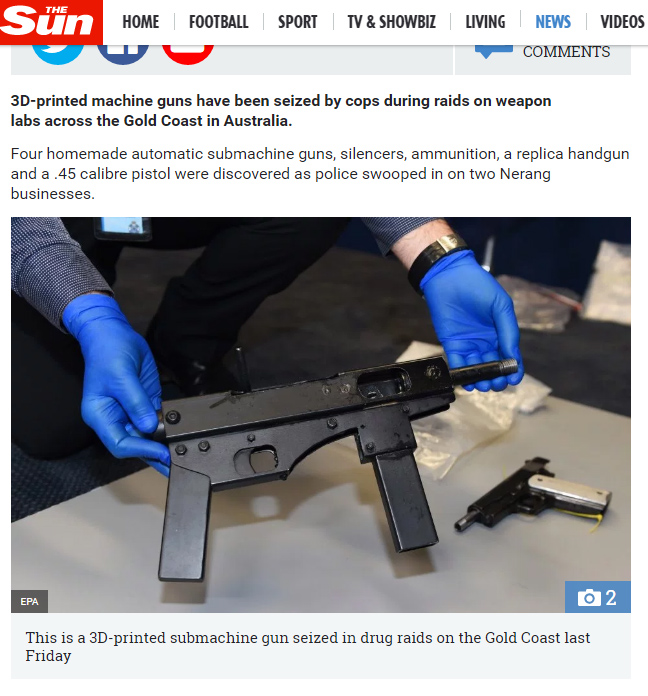Legal experts and gunmaking hobbyists have cast doubt over the relevance of US President Joe Biden’s upcoming ‘ghost gun’ reforms to the 3D printing industry.
Soon to be introduced in the form of ‘Final Rule 2021R-05F,’ these changes will see the US Bureau of Alcohol, Tobacco, Firearms and Explosives (ATF) alter how it defines a firearm. By broadening this meaning to include unfinished frames and receivers, the ATF is now set to mandate that these feature serial numbers too, in a move designed to limit unmarked gun access, with touted 3D printing implications.
When contacted by 3D Printing Industry, however, Youtuber Sean Aranda (aka 3D Print General), Erich Pratt, Senior VP of Gunowners of America, and Michael Weinberg, Executive Director of the NYU School of Law’s Engelberg Center on Innovation Law and Policy, have indicated that this may not necessarily be the case.
In particular, Weinberg, whose institute specializes in exploring tech policy ramifications, has highlighted how the changes don’t address 3D printing specifically, thus they could actually be seen as a welcome move away from the traditional media hype around printed guns.
“My primary concern with the earlier proposals was that they singled out 3D printing as a manufacturing method,” explained Weinberg. “This new proposal addresses privately-made firearms regardless of the specific tools and technologies used to make them. I think this new rule is a win for the 3D printing community.”

What are ‘ghost guns’ and why is 3D printing relevant?
‘Ghost gun’ is a blanket term used to describe any unserialized, privately-made firearm. These can either be bought as ‘buy build shoot’ kits and assembled, or produced at home using 3D printing or other technologies. At present, doing so is perfectly legal in the United States, providing that any resulting firearms are made for personal use, with a license being required to sell or distribute them.
However, US lawmakers are becoming increasingly concerned that anyone can acquire and assemble such a weapon without having to undergo any of the checks required to obtain a regular firearm. In fact, the White House claims that many law enforcers are now struggling to trace unmarked guns as part of various criminal investigations, hence it says the Biden administration has been forced into action.
Yet, the White House also adds that the upcoming changes necessitating “ghost guns made from individual parts, kits or by 3D printers” be marked moving forwards, are targeted specifically towards “licensed firearm dealers and gunsmiths,” leading Aranda to question the impact they’ll actually have on hobbyist gunmakers.
“I’m not an attorney, but from my understanding, this does not affect 3D printed guns whatsoever,” said Aranda. “This ruling seems to be only focused on kits with P80 frames and jigs, and would not have anything to do with manufacturing your own firearm from scratch (aka 3D printing them). You can still purchase all of the parts required to complete your 3D printed firearm the same as you were able to before this ruling.”
Weinberg, on the other hand, who has a storied history in both 3D printing and examining related policy, says the technology could well be affected, but the means of manufacturing shouldn’t be the defining factor in restricting home-made guns.
“If a policymaker was concerned about ‘ghost guns’ or guns made by individuals, it should not matter exactly what technology is used in their manufacture,” added Weinberg. “I will admit that I was not thrilled that 3D printing is still being used to frame discussion about the larger issue. That being said, the most important thing is that the technology is not treated differently in the rules themselves.”

Challenging Biden’s Final Rule
Biden’s Final Rule effectively changes the ATF’s definition of a firearm to take into account the tech advances that have taken place since this was legally defined back in 1968 and 1971. Significantly, the revised definition now includes incomplete, disassembled, and nonfunctional frames or receivers, which have reached a stage in their manufacture where they may “readily be made to function.”
As a result, once the change comes into effect (set to be 120 days after it appears in the Federal Register), firearm manufacturers and resellers that buy or build their own guns (3D printed or otherwise) will have to mark them. For those who have already created ‘privately made firearms,’ they’ll have until sixty days after the rule is introduced to do so, whether this be achieved privately or via a gunsmith.
The idea being, that in future, if anyone were to buy one of these firearms and commit a crime with it, they could easily be identified. Speaking to 3D Printing Industry, however, Erich Pratt, Senior VP of Gunowners of America, has raised doubts about the validity of White House claims that ghost guns are the “weapon of choice” for criminals, emphasizing that “registering guns doesn’t prevent crime.”
“The term ‘ghost guns’ is just a phrase that anti-gunners use to demonize privately-made firearms,” said Pratt. “This President is not as interested in protecting public safety, as much as he wants to implement a radical gun control regime. Serialization is not designed to stop criminals, but it is intended to register the law-abiding, which history shows is the first step toward confiscation.”

The hype surrounding 3D printed guns
The widespread availability of 3D printable gun models has been sensationalized in the press for some time now. In just one example of this, which took place during October 2019, widespread media coverage of a synagogue attack in Germany reported that the gunman responsible was wielding a 3D printed weapon, but it was later revealed that it only featured non-critical additive manufactured parts.
Likewise, following a 2016 drug raid in Queensland, Australia, 3D printed sub-machine guns were widely reported as having been found at the scene. Yet, when 3D Printing Industry reached out to the detective behind the investigation, it was told that the firearm wasn’t created via the technology at all. In fact, it turned out that a 3D printer just happened to be found, and news sites connected it to the gun.
Despite this now-fairly common mismatch between the fear of 3D printed guns and reality, government agencies and companies alike continue trying to reduce access to such firearms and regulate them more heavily. Just last year, the Bureau of Industry and Security began imposing Export Administration Regulations restrictions on printed guns, after they were removed from the US Munitions List.
That’s not to say that these efforts have always been successful, as In 2018, the US Department of Justice actually overturned a ban on sharing gun files, but with the issue of 3D printed firearms continuing to be caught up in the debate around ghost guns, regulatory changes such as Biden’s could soon see them become more tightly-governed.
To stay up to date with the latest 3D printing news, don’t forget to subscribe to the 3D Printing Industry newsletter or follow us on Twitter or liking our page on Facebook.
For a deeper dive into additive manufacturing, you can now subscribe to our Youtube channel, featuring discussion, debriefs, and shots of 3D printing in-action.
Are you looking for a job in the additive manufacturing industry? Visit 3D Printing Jobs for a selection of roles in the industry.
Featured image shows US President Joe Biden. Image via the White House.



